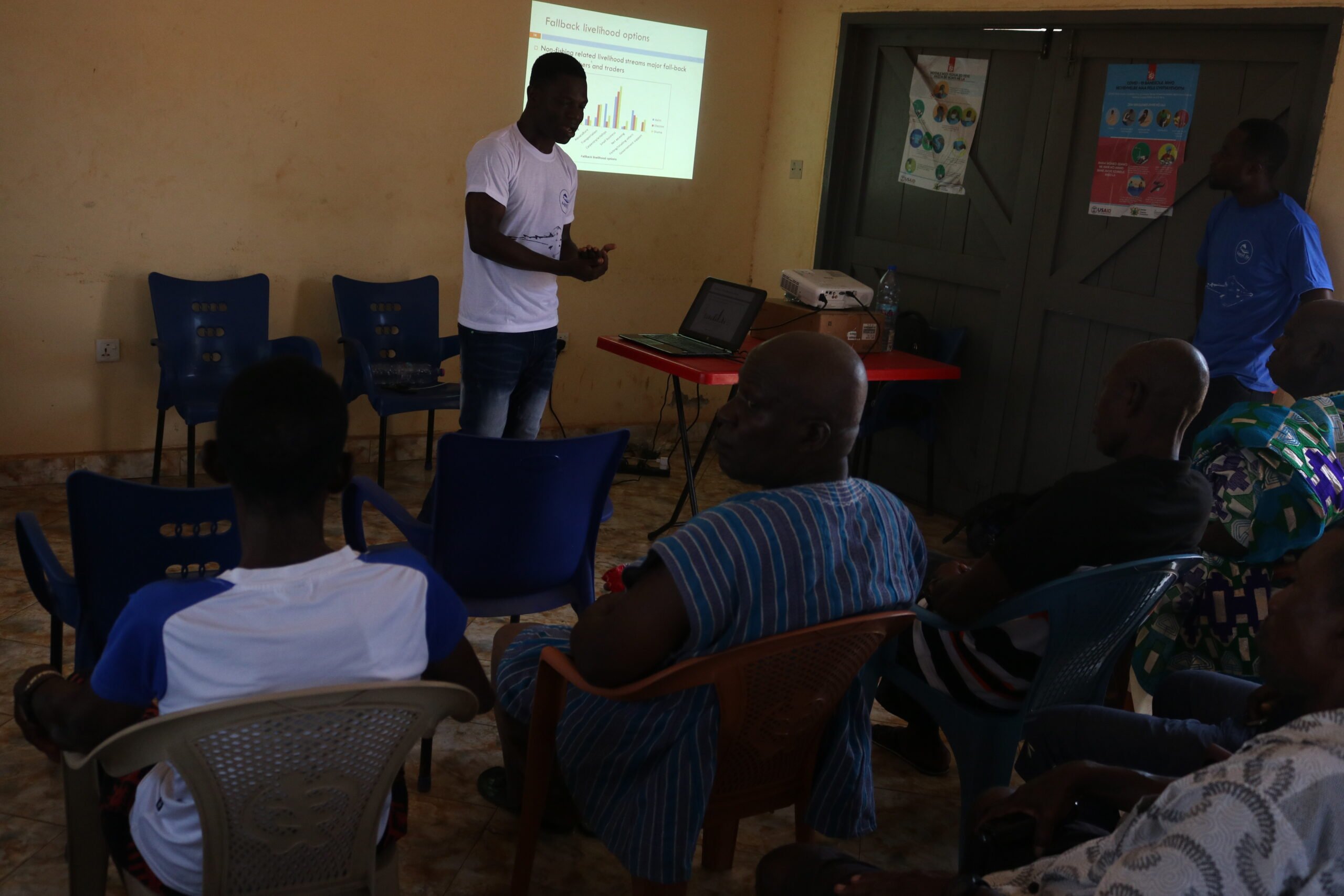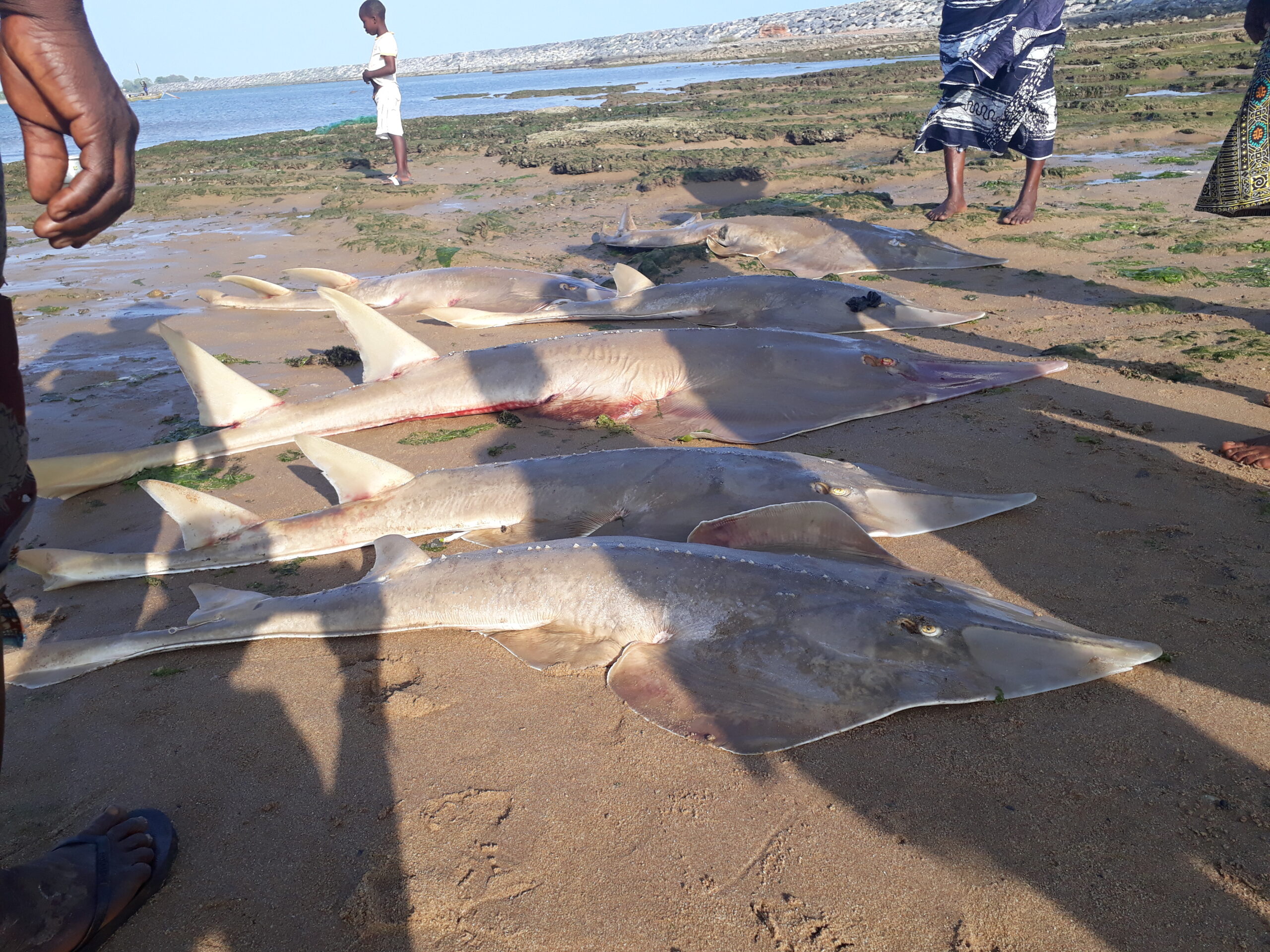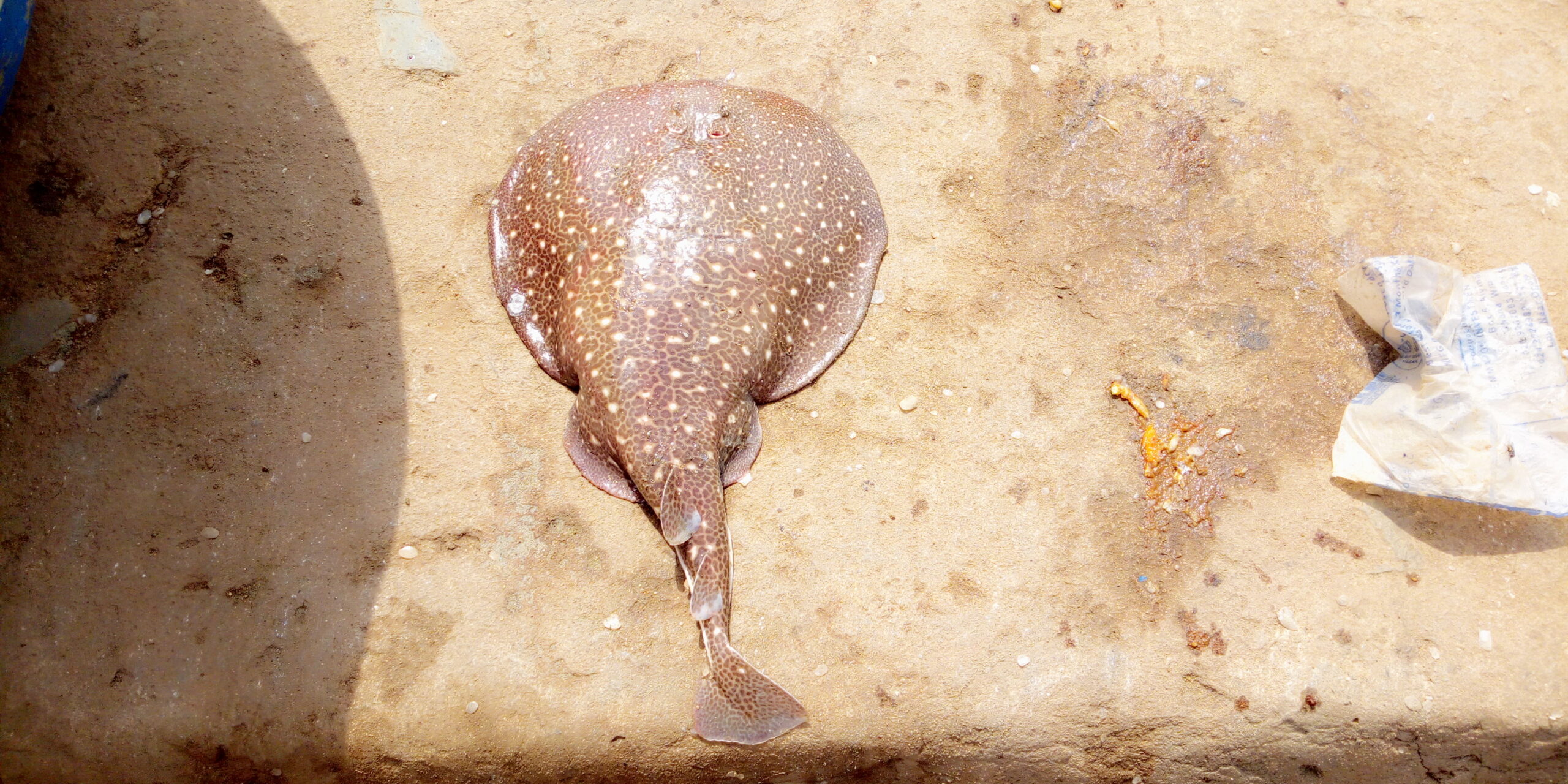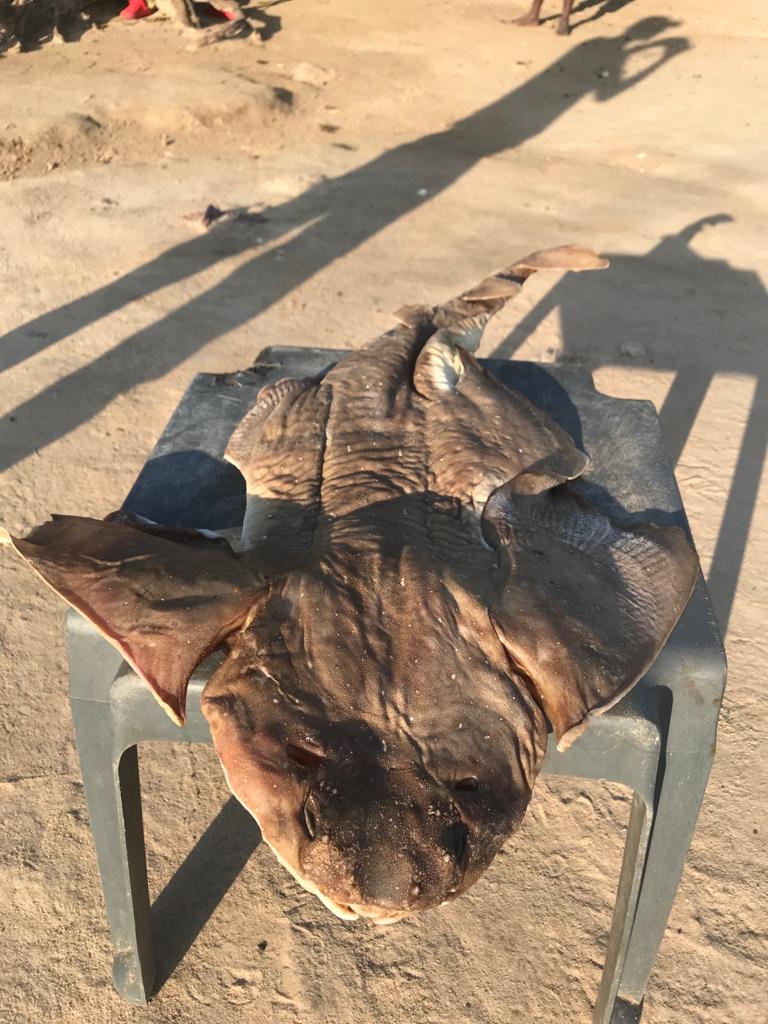Sharks and rays survey: Insights and a call to action to mitigate extinction in Ghana
Over the past seven months, a team from AquaLife Conservancy has embarked on a mission to expand the scope of our conservation and research work on shark-like rays and other elasmobranchs in Ghana through the support of the Save Our Seas Foundation Keystone Grant. We are using diverse techniques such as landing or market site surveys, interviews, and convening a series of meetings with fishers, canoe owners, fish traders, local communities, and other key stakeholders in the fisheries sector to dialogue on the various conservation methods needed to mitigate threats to sharks and rays. We are also collecting tissue samples of the various species to perform molecular analysis and further conducted community education and awareness campaigns to raise conservation profiles of sharks and rays. We have unearthed some relevant findings on sharks and rays in Ghana that highlight relevant opportunities to protect these imperiled species.

Meeting with fishers at Axim. Photo © Issah Seidu
Through our landing and market sites survey, we have documented a total of 1512 elasmobranch specimens, which constitute 987 sharks and 525 rays. A total of 36 species comprising of 22 sharks and 14 rays have been recorded. Blue shark Prionace glauca (n= 629) is dominating the shark landing, while African brown skate Raja parva (n= 274) is dominating the ray landings. This record has brought the total sharks and rays record of Ghana to 47 species (28 sharks and 19 rays).
We also focused our attention on surveying shark-like rays (wedgefish, sawfishes, and guitarfish) to collect key data on their fisheries activities in areas that were previously not explored. So far, we have recorded a total of 242 individuals of guitarfish comprising four species in different fishing communities. These species are spineback guitarfish Rhinobatos irvinei, whitespotted guitarfish Rhinobatos albomaculatus, common guitarfish Rhinobatos rhinobatos, and blackchin guitarfish Gluacostegus cemiculus. Spineback guitarfish Rhinobatos irvinei is the dominant species (n= 164) landed. Shark-like ray population over the years has been decreasing at an alarming rate. Interviewed fishers and canoe owners reported a remarkable decrease in their numbers as compared to previous decades when they started fishing and attributed their decline to a number of reasons. Overfishing basically referring to more canoes in the oceans, the emergence of industrial and semi-industrial fleets, which are fishing in unapproved areas and catching these species above their quota sanctioned by the Fisheries Laws of Ghana are major reasons cited by interviewed fishers, traders, and canoe owners.

Blackchin guitarfish. Photo © Issah Seidu
Noteworthy species is the two records of torpedo species, which are different from the various torpedo species we have recorded. Samples have been taken for further DNA analysis to confirm the species. We are optimistic it might be a new record of species for science.

Torpedo ray. Photo © Issah Seidu
Another noteworthy species occurrence includes three records of the rare and Critically Endangered smoothback angelshark, Squatina oculata. The sizes of the specimens range from 120- 142 cm in total length. Interviewed fishers indicated that the species is highly rare in their catch. The catch frequency of the species reported by the fishers is five individuals on average per year. Once landed, the species is mostly sold to fish traders for cash income and consumed locally for protein. Since 2020 until now, this is the first record of the smoothback angelshark in our survey expedition. Special attention and efforts have been dedicated to recording this species together with sawfish, and wedgefish during our surveys but all efforts have been futile until now. Smoothback angleshark has been categorized as Critically Endangered on the IUCN red list of threatened species. There is little species-specific data on the species in West Africa according to the IUCN. However, the species is known to be locally extinct in many parts of the West African Coast. Thus, the record of the species gives us much credence to devise immediate conservation efforts to safeguard it from the brink of extinction. This is also a major step forward for a much more intensive survey of the species and other equally threatened but more elusive species in Ghana and across West Africa.

Angel shark. Photo © Issah Seidu
